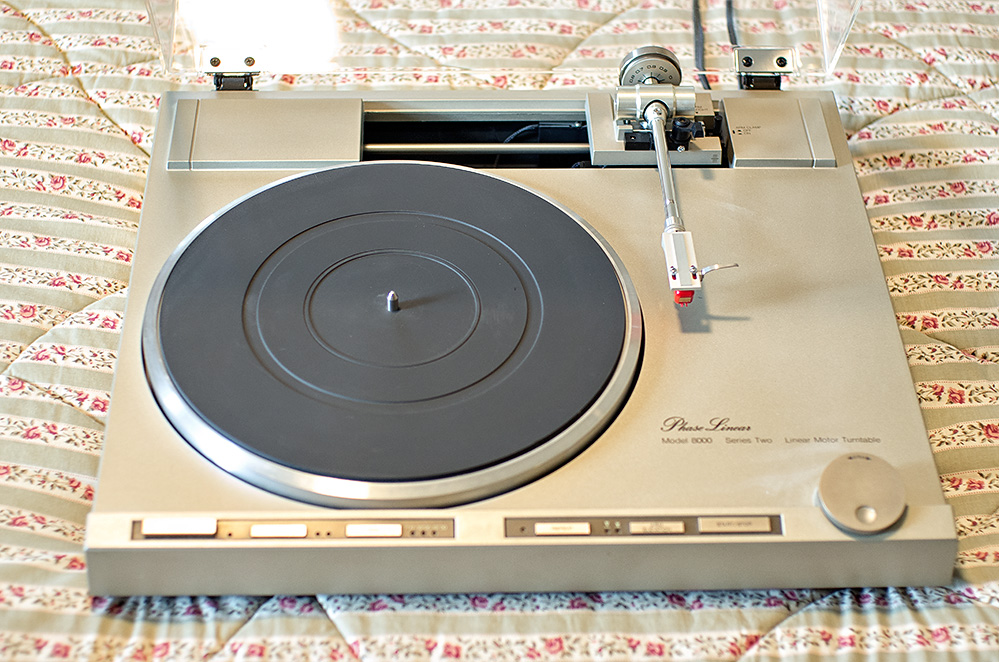From a British perspective, high-end turntables in the late 1970s started with Rega’s Planar 3 and finished with the fully equipped Linn Sondek. That was the final chapter of the story. However, in those heady days when belt-drive ruled the roost and direct-drives were judged ‘unmusical’ by the UK press, any audiophile looking East would have discovered some incredible high-end turntables from Japan, some of which had immense engineering depth. This was Pioneer’s top-of-the-line parallel-tracking, quartz-locked, direct-driven, independently sprung subchassis turntable…
The PL-L1000 was a gorgeous machine, manufactured to the finest standards, and sold for nearly three times the price of a Linn LP12. You can’t help but be pleased by the quality of its controls, from the turn-wheel tonearm cueing control to the crisp, muted “click” of the lift/lower microswitch. That parallel tracking tonearm is well done, but it’s not as fiddly as many recent designs – it glides gently across the disc, tracks securely, and returns silently to its rest at the end of the disc.
The turntable motor unit is likewise outstanding, with a weighty, dynamically balanced cast aluminium alloy platter and thick rubber mat, as well as an aluminium plinth and steel base, the former separated by Pioneer’s innovative ‘coaxial’ spring suspension system. Yes, this deck is just as ‘sprung’ as a Linn Sondek, but it’s done so subtly that you wouldn’t notice unless you were looking for it – the arm, platter, bearing, and motor all hang from rubber-coated internal struts (similar to SME’s Model 30), making them impervious to the vibrations the platter and base pick up. The motor is a brushless, slotless linear design with a phase-locked loop quartz circuit that keeps wow and flutter to a vanishingly low 0.02 percent WRMS. The bearing housing is a strong alloy casting that encloses a carefully machined spindle.
The sound is just as smooth as the ergonomics, with a smooth, open, neutral quality that is significantly less showy and in-your-face than, say, rival Technics direct-drive motor units. The bass is excellent, taut and tight, forceful and punchy, yet it blends seamlessly into a wide-open midband, allowing you to appreciate the smooth steadiness and rock-solid stereo imaging that a properly designed parallel tracking turntable can provide. The treble is crisp, open, and extended, producing a sound that is very close to the master tape while being significantly less jittery than other traditionally armed turntables. In a nutshell, it’s fantastic, and it’s all the more impressive given that it’s a totally autonomous deck with a ‘weather eye’ on convenience.
Needless to say, PL-L1000s are hard to come by – many were skipped in the UK in the 1980s when magazines snickered at the reputedly “terrible” sound of Japanese direct-drives, having only ever heard bottom-of-the-range designs and thus unconcerned with making broad generalizations. Thankfully, there are still a few more turning in Europe, the United States, and Japan. May they continue to run for a long time!






